Bamboo is a renewable and widely distributed resource. It is used in crafts, in the production of furniture and even as a building material. Freshly cut and still green, bamboo is very flexible, it can be shaped and treated for multiple uses. Learn how simple it is to bend bamboo to suit your needs.
Steps
Method 1 of 3: Bend the Bamboo Using Water

Step 1. Fill a tub with warm water
Insert the bamboo sticks into the tub and let them soak overnight.
- Like wood, bamboo needs moisture to flex. Moisture softens the lignin and hemicellulose present in the bamboo cells allowing them to fold. Without heat or humidity these molecules crystallize, remaining practically fixed.
- Depending on the size and thickness of the bamboo, the soaking time can be longer.

Step 2. Try the bamboo
Pull the bamboo out of the water and slowly bend it, trying to force it into the desired shape. If you hear a creak, the bamboo hasn't been soaking long enough and needs to be put back into the water.
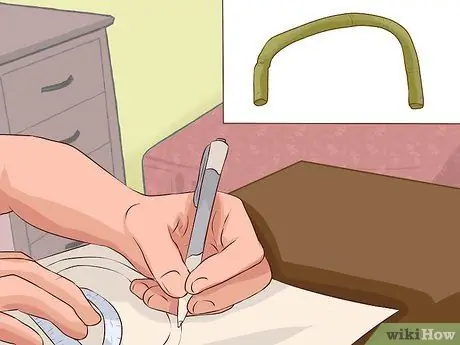
Step 3. Draw the desired shape
Take a large sheet of paper and sketch the outline you want to give your bamboo. Lay the paper on a plywood board.
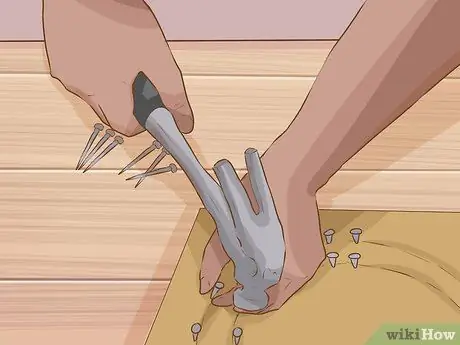
Step 4. Fix the drawing
Using the sketch as a guide, nail the sheet to the plywood. Each nail should be about 2.5cm apart.
Hammer in a second row of nails. This line should be parallel to the one previously set and the distance between the two rows should be slightly wider than the diameter of the bamboo

Step 5. Shape the bamboo
Once the bamboo has soaked sufficiently and is flexible, remove it from the water and place it on the plywood between the two rows of nails. Let it dry for one to three days.
You can check if the shape has hardened by removing the bamboo from the board. If it keeps the same shape, it has dried into the shape you want
Method 2 of 3: Bend the Bamboo Using a Knife
This technique is often used by furniture manufacturers to either correct a warped piece or to create a slight bend or rounded edge. This method can be applied to both canes and bamboo cut in half.
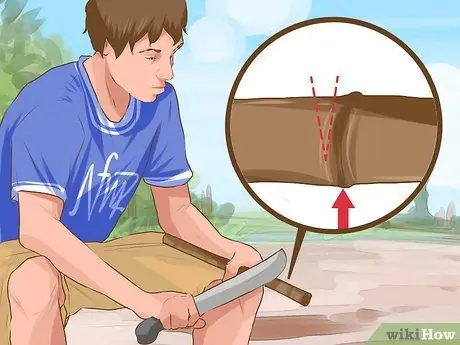
Step 1. Cut the bamboo
Make a V-shaped cut just below one of the bamboo knots. A knot is one of the joints in the bamboo rod, which resembles a knee and divides the rod into segments.
- Make a tight cut if you want a slight curvature. Make the cut wider if the curvature needs to be more noticeable.
- The cut can be as deep as two thirds of the diameter of the barrel. Cuts can be shallower for less intense creases.
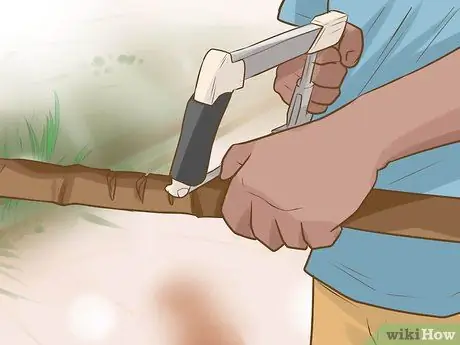
Step 2. Make multiple cuts along the barrel to create a circular shape
Cutting near the nodes makes this alteration less visible.
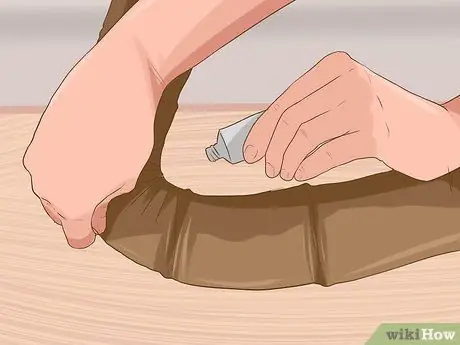
Step 3. Fold the bamboo to the chosen shape
Secure the bamboo by tying it or using duct tape to make it sit still.
Method 3 of 3: Bend the Bamboo Using Heat
This technique is more advanced than the previous ones. It is mainly used by expert craftsmen who use bamboo to make very complicated furniture and handicrafts.
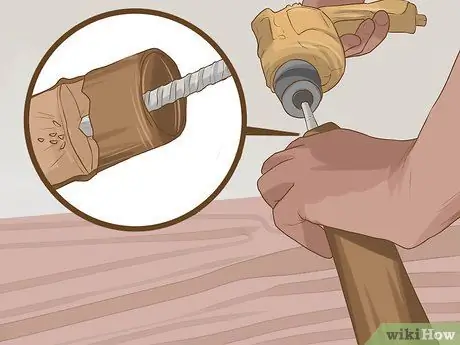
Step 1. Empty the bamboo canes
Use a rod (the steel bar commonly used to make concrete more resistant to tensile and shear stresses) to break up the internal nodules of the bamboo. This is done by pushing the rod in and out, from one side of the barrel to the other. You should get an empty tube.
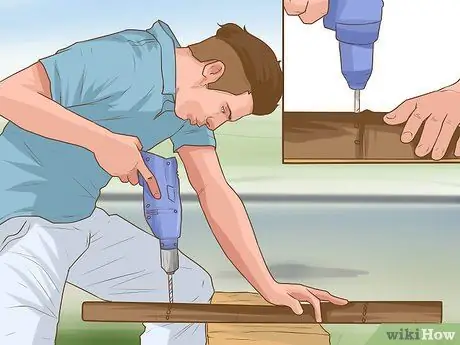
Step 2. Make some steam holes
By applying heat to the bamboo cane, steam is formed. To let it come out, it is recommended to drill a few holes along the knots.
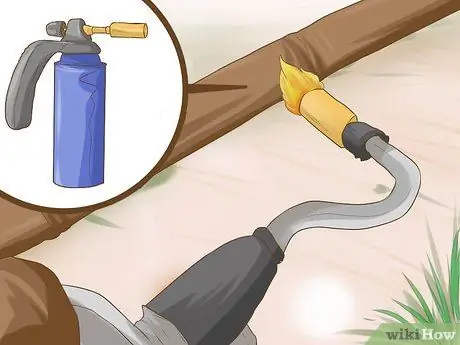
Step 3. Heat the bamboo
Take the blowtorch and start applying heat to the barrel, continually moving it from the larger parts to the thinner ones. The heat should be higher than the boiling temperature. This involves two things:
- The hot coloring of bamboo. The application of heat acts like a dye on the bamboo, giving it a warm coffee color.
- The lignin and pectin in bamboo become soft and flexible, allowing you to shape it more easily.

Step 4. Check the flexibility of the bamboo
Use a wet cloth to rub the barrel, dabbing the moisture along the surface. Control the flexibility of the bamboo by flexing the rod slightly. It should give way quite easily.
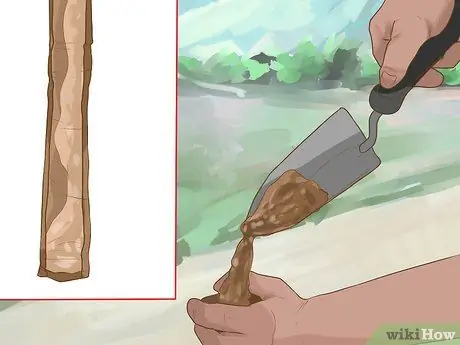
Step 5. Plug one end of the barrel and fill it with sand
Hit the bamboo with the palm of your hand or a shovel to move the sand to the base of the rod. The sand stabilizes the bamboo so that the walls do not sag when you fold them.
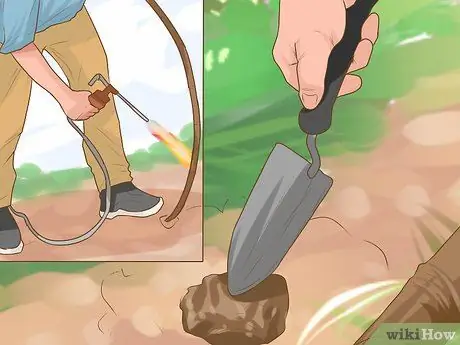
Step 6. Get ready to bend the bamboo cane
Dig a hole in the ground 6 to 8 inches deep and slightly larger than the diameter of the bamboo. Holding it firmly for leverage, you are now ready to shape the barrel.
- Start by setting it on fire again with the blowtorch. Focus on the part you want to fold, keeping the flame moving.
- Occasionally rub the barrel with a wet cloth. Water prevents the bamboo from drying out completely, becoming too brittle. Dried bamboo breaks and splits in two easily.
- As you work the bamboo with the blowtorch, start bending it to the desired shape.
- Keep working with the flame, flexing and humidifying the barrel until you get the shape you want. This can take time. It is at this point that the bamboo usually breaks, due to the pressure exerted. The more time you spend shaping the bamboo slowly, the less likely you are to crack it.

Step 7. Enjoy your new, freshly folded and hot-dyed bamboo
These wider rods are mainly used to build furniture, but can be used for a wide variety of handicrafts.
Advice
- Try to work with freshly cut green bamboo. It is flexible and easier to work with (especially for beginners).
- Once dry, the bamboo cannot be folded into a permanent shape.






